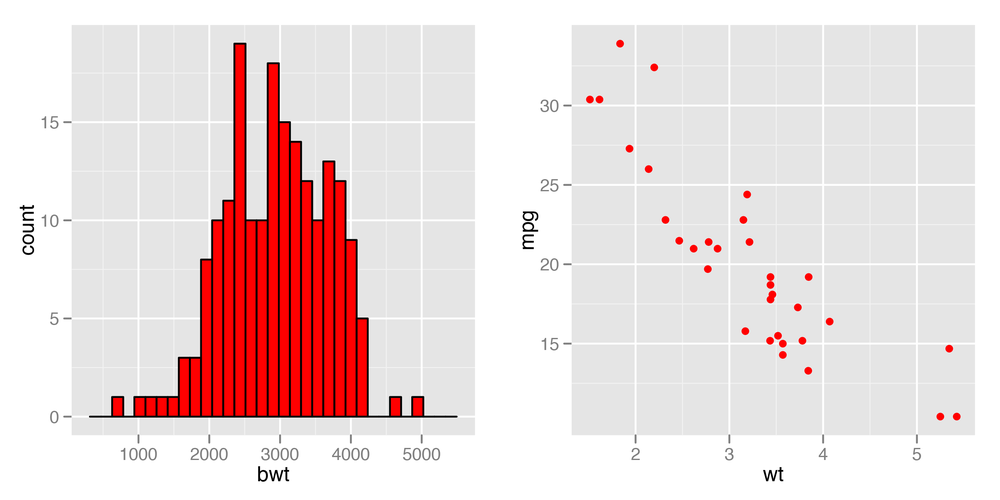Chapter 12. Using Colors in Plots
In ggplot2’s implementation of the grammar of graphics, color is an aesthetic, just like x position, y position, and size. If color is just another aesthetic, why does it deserve its own chapter? The reason is that color is a more complicated aesthetic than the others. Instead of simply moving geoms left and right or making them larger and smaller, when you use color, there are many degrees of freedom and many more choices to make. What palette should you use for discrete values? Should you use a gradient with several different hues? How do you choose colors that can be interpreted accurately by those with color-vision deficiencies? In this chapter, I’ll address these issues.
Setting the Colors of Objects
Problem
You want to set the color of some geoms in your graph.
Solution
In the call to the geom, set the values of colour or fill (Figure 12-1):
ggplot(mtcars,aes(x=wt,y=mpg))+geom_point(colour="red")library(MASS)# For the data setggplot(birthwt,aes(x=bwt))+geom_histogram(fill="red",colour="black")

Discussion
In ggplot2, there’s an important difference between
setting and mapping aesthetic
properties. In the preceding example, we set the color of the objects to
"red".
Generally speaking, colour
controls the color of lines and of the outlines of polygons, while
fill controls ...
Get R Graphics Cookbook now with the O’Reilly learning platform.
O’Reilly members experience books, live events, courses curated by job role, and more from O’Reilly and nearly 200 top publishers.

